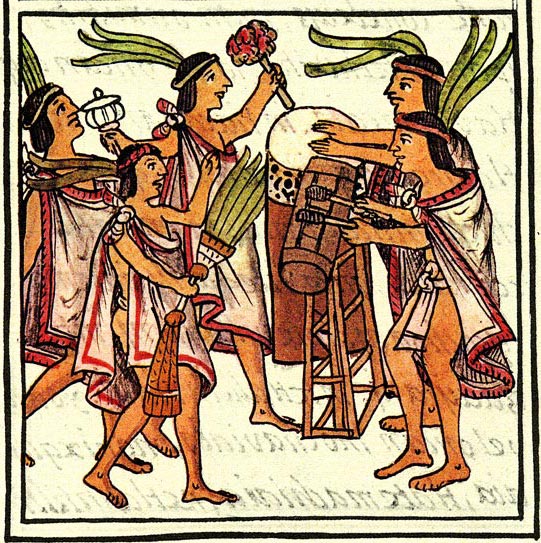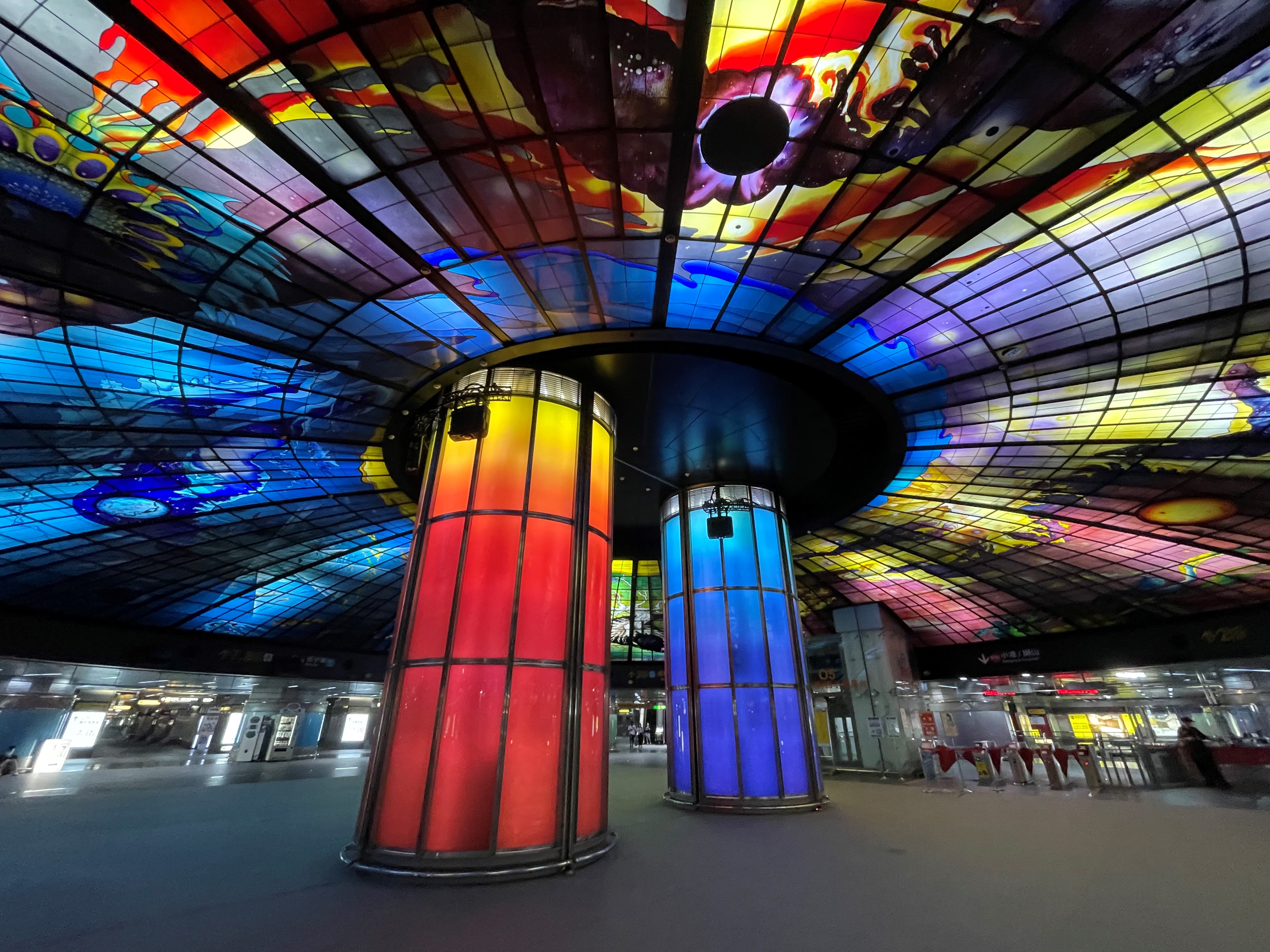|
Metro Ecatepec
Ecatepec (until August 25, 2008, called Tecnológico) is a station on Line B of the Mexico City Metro system. It is in the Ecatepec de Morelos city in the State of Mexico adjacent to Mexico City. The station opened on November 30, 2000, under its original name, Metro Tecnológico. The station's icon was the emblem of the Tecnológico de Estudios Superiores de Ecatepec, whose facilities are located nearby.See also: On 23 July 2008, Francisco Bojórquez Hernández, director of the ''Sistema de Transporte Colectivo Metro'', and José Luis Gutiérrez Cureño, Ecatepec's municipal president, established an agreement to improve the security, quality, and efficacy of the services at the station. As part of their agreement, they decided to change the name and iconography of the station. On August 25, 2008, Metro Tecnológico was renamed Metro Ecatepec, after the neighborhood where it is located. The updated station logo shows a Mexica The Mexica (Nahuatl: , ;''Nahuatl Dictionary.' ... [...More Info...] [...Related Items...] OR: [Wikipedia] [Google] [Baidu] |
Mexico City Metro
The Mexico City Metro ( es, Metro de la Ciudad de México) is a rapid transit system that serves the metropolitan area of Mexico City, including some municipalities in Mexico State. Operated by the Sistema de Transporte Colectivo (STC), it is the second largest metro system in North America after the New York City Subway. In 2019, the system served 1.655 billion passengers, the tenth highest ridership in the world. The inaugural STC Metro line was long, serving 16 stations, and opened to the public on 4 September 1969. The system has expanded since then in a series of fits and starts. , the system has 12 lines, serving 195 stations, and of route. Ten of the lines are rubber-tired. Instead of traditional steel wheels, they use pneumatic traction, which is quieter and rides smoother in Mexico City's unstable soils. The system survived the 1985 Mexico City earthquake. Of the STC Metro's 195 stations, 44 serve two or more lines (''correspondencias'' or trans ... [...More Info...] [...Related Items...] OR: [Wikipedia] [Google] [Baidu] |
Ecatepec De Morelos
Ecatepec (), officially Ecatepec de Morelos, is a municipality in the central Mexican state of Mexico, and is situated in the north part of the greater Mexico City urban area. The municipal seat is San Cristóbal Ecatepec. The city of Ecatepec is practically co-extensive with the municipality, comprising 99% of the total municipal population of 1,645,352. It is Mexico's fourth most-populous municipality after Tijuana, León and Puebla, and the most populated suburb of Greater Mexico City. The name "Ecatepec" is derived from Nahuatl, and means "windy hill" or "hill devoted to Ehecatl (the wind god)." It was also an alternative name or invocation to the god Quetzalcoatl. "Morelos" is the last name of José María Morelos, a hero of the Mexican War of Independence. Saint Christopher is the city's patron saint, celebrated on July 25. Ecatepec is served by the Mexico City metro, by the State of Mexico's Mexibús bus rapid transit lines, and by Mexicable aerial cable car lines. ... [...More Info...] [...Related Items...] OR: [Wikipedia] [Google] [Baidu] |
Railway Stations Opened In 2000
Rail transport (also known as train transport) is a means of transport that transfers passengers and goods on wheeled vehicles running on rails, which are incorporated in tracks. In contrast to road transport, where the vehicles run on a prepared flat surface, rail vehicles (rolling stock) are directionally guided by the tracks on which they run. Tracks usually consist of steel rails, installed on sleepers (ties) set in ballast, on which the rolling stock, usually fitted with metal wheels, moves. Other variations are also possible, such as "slab track", in which the rails are fastened to a concrete foundation resting on a prepared subsurface. Rolling stock in a rail transport system generally encounters lower frictional resistance than rubber-tyred road vehicles, so passenger and freight cars (carriages and wagons) can be coupled into longer trains. The operation is carried out by a railway company, providing transport between train stations or freight customer facilit ... [...More Info...] [...Related Items...] OR: [Wikipedia] [Google] [Baidu] |
Mexico City Metro Line B Stations
Mexico ( Spanish: México), officially the United Mexican States, is a country in the southern portion of North America. It is bordered to the north by the United States; to the south and west by the Pacific Ocean; to the southeast by Guatemala, Belize, and the Caribbean Sea; and to the east by the Gulf of Mexico. Mexico covers ,Mexico ''''. . making it the world's 13th-largest country ... [...More Info...] [...Related Items...] OR: [Wikipedia] [Google] [Baidu] |
Mexica
The Mexica (Nahuatl: , ;''Nahuatl Dictionary.'' (1990). Wired Humanities Project. University of Oregon. Retrieved August 29, 2012, frolink/ref> singular ) were a Nahuatl-speaking indigenous people of the Valley of Mexico who were the rulers of the Aztec Empire. The Mexica established Tenochtitlan, a settlement on an island in Lake Texcoco, in 1325. A dissident group in Tenochtitlan separated and founded the settlement of Tlatelolco with its own dynastic lineage. In 1521, they were conquered by an alliance of Spanish conquistadors and indigenous people including the Tlaxcaltecs led by Hernán Cortés. Names The ''Mexica'' are eponymous of the place name Mexico (''Mēxihco'' ), originally referring to the interconnected settlements in the valley that is now Mexico City. The group was also known as the Culhua-Mexica in recognition of its kinship alliance with the neighboring Culhua, descendants of the revered Toltecs, who occupied the Toltec capital of Tula from the 1 ... [...More Info...] [...Related Items...] OR: [Wikipedia] [Google] [Baidu] |
Sistema De Transporte Colectivo Metro
The Mexico City Metro ( es, Metro de la Ciudad de México) is a rapid transit system that serves the metropolitan area of Mexico City, including some municipalities in Mexico State. Operated by the Sistema de Transporte Colectivo (STC), it is the second largest metro system in North America after the New York City Subway. In 2019, the system served 1.655 billion passengers, the tenth highest ridership in the world. The inaugural STC Metro line was long, serving 16 stations, and opened to the public on 4 September 1969. The system has expanded since then in a series of fits and starts. , the system has 12 lines, serving 195 stations, and of route. Ten of the lines are rubber-tired. Instead of traditional steel wheels, they use pneumatic traction, which is quieter and rides smoother in Mexico City's unstable soils. The system survived the 1985 Mexico City earthquake. Of the STC Metro's 195 stations, 44 serve two or more lines (''correspondencias'' or transfe ... [...More Info...] [...Related Items...] OR: [Wikipedia] [Google] [Baidu] |
Mexico City
Mexico City ( es, link=no, Ciudad de México, ; abbr.: CDMX; Nahuatl: ''Altepetl Mexico'') is the capital and largest city of Mexico, and the most populous city in North America. One of the world's alpha cities, it is located in the Valley of Mexico within the high Mexican central plateau, at an altitude of . The city has 16 boroughs or ''demarcaciones territoriales'', which are in turn divided into neighborhoods or ''colonias''. The 2020 population for the city proper was 9,209,944, with a land area of . According to the most recent definition agreed upon by the federal and state governments, the population of Greater Mexico City is 21,804,515, which makes it the sixth-largest metropolitan area in the world, the second-largest urban agglomeration in the Western Hemisphere (behind São Paulo, Brazil), and the largest Spanish-speaking city (city proper) in the world. Greater Mexico City has a GDP of $411 billion in 2011, which makes it one of the most productive urb ... [...More Info...] [...Related Items...] OR: [Wikipedia] [Google] [Baidu] |
Mexico City Metro Line B
Mexico City Metro Line B is one of the twelve metro lines operating in Mexico City, Mexico. It has 21 stations and a total length of , service the line while the rest are used for maneuvers. Line B runs from downtown Mexico City north towards the municipality of Ecatepec de Morelos. Currently, it is the only line in the whole metro network to use two distinctive colors: green and gray. Alongside Line 12, Line B is one of the two metro lines of the network to have the three type of stations: underground, elevated and surface. History Line B was planned as a feeder line that would connect Mexico City to the adjacent municipalities of the State of Mexico, such as Ecatepec de Morelos and Ciudad Nezahualcóyotl, therefore, instead of using the same numbering system as with the other metro lines, the line was named as Line B, same as in Line A, which connects Mexico City with the municipality of La Paz, also in the State of Mexico. Line B was conceived in the early 1990s a ... [...More Info...] [...Related Items...] OR: [Wikipedia] [Google] [Baidu] |
Rapid Transit
Rapid transit or mass rapid transit (MRT), also known as heavy rail or metro, is a type of high-capacity public transport generally found in urban areas. A rapid transit system that primarily or traditionally runs below the surface may be called a subway, tube, or underground. Unlike buses or trams, rapid transit systems are railways (usually electric railway, electric) that operate on an exclusive right-of-way (transportation), right-of-way, which cannot be accessed by pedestrians or other vehicles, and which is often grade-separated in tunnels or on elevated railways. Modern services on rapid transit systems are provided on designated lines between rapid transit station, stations typically using electric multiple units on rail tracks, although some systems use guided rubber tires, magnetic levitation (''maglev''), or monorail. The stations typically have high platforms, without steps inside the trains, requiring custom-made trains in order to minimize gaps between train a ... [...More Info...] [...Related Items...] OR: [Wikipedia] [Google] [Baidu] |
Metro Station
A metro station or subway station is a station for a rapid transit system, which as a whole is usually called a "metro" or "subway". A station provides a means for passengers to purchase tickets, board trains, and evacuate the system in the case of an emergency. In the United Kingdom, they are known as underground stations, most commonly used in reference to the London Underground. Location The location of a metro station is carefully planned to provide easy access to important urban facilities such as roads, commercial centres, major buildings and other transport nodes. Most stations are located underground, with entrances/exits leading up to ground or street level. The bulk of the station is typically positioned under land reserved for public thoroughfares or parks. Placing the station underground reduces the outside area occupied by the station, allowing vehicles and pedestrians to continue using the ground-level area in a similar way as before the station's constructio ... [...More Info...] [...Related Items...] OR: [Wikipedia] [Google] [Baidu] |




